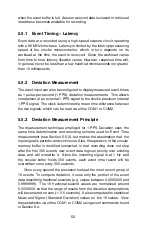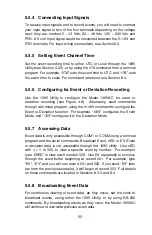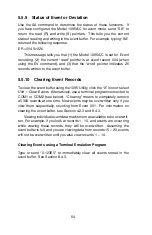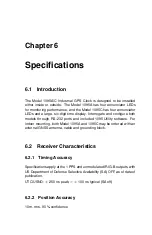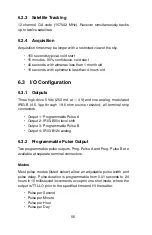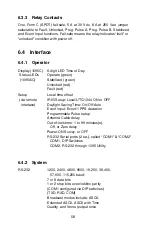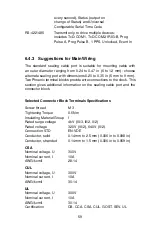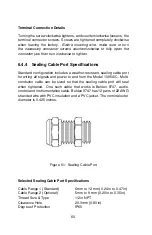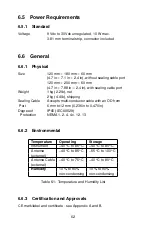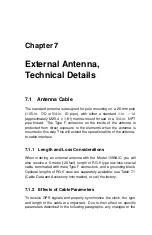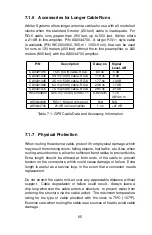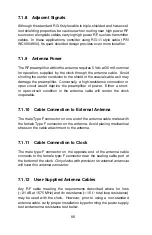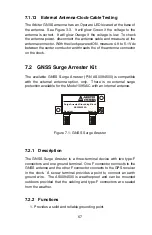
when the event buffer is full. As soon as event data is viewed or retrieved
its address becomes available for recording.
5.5.1
Event Timing – Latency
Event data are recorded using a high-speed capture circuit operating
with a 96 MHz time-base. Latency is limited by the interrupt processing
speed of the clock’s microcontroller, which in turn depends on its
workload at the time the event is received. Since the workload varies
from time to time, latency likewise varies. However, response time will,
in general, never be less than a few hundred microseconds nor greater
than 10 milliseconds.
5.5.2
Deviation Measurement
The event input can also be configured to display measured event times
as 1 pulse-per-second (1 PPS) deviation measurements. This allows
comparison of an external 1-PPS signal to the clock’s precision internal
1-PPS signal. The clock determines the mean time difference between
the two signals, which can be read via either COM1 or COM2.
5.5.3
Deviation Measurement Principle
The measurement technique employed for 1-PPS Deviation uses the
same time determination and recording scheme used for Event Time
measurement (see Section 5.5.2), but makes the assumption that the
input signal is periodic and continuous. Also, the operation of the circular
memory buffer is modified somewhat, in that recording does not stop
after the first 300 events; new event data is given priority over existing
data, and will overwrite it. Since the incoming signal is at 1 Hz and
the circular buffer holds 300 events, each event time record will be
overwritten once every 300 seconds.
Once every second the processor looks at the most recent group of
16 events. To compute deviation, it uses only the portion of the event
data describing fractional seconds (e.g. values between 0.0000000 and
0.9999999). The 16 fractional-second values are normalized around
0.0000000, so that the range of results from the deviation computations
will be centered on zero (
±
0.5 seconds). It also computes the statistical
Mean and Sigma (Standard Deviation) values on the 16 values. View
these statistics via either COM1 or COM2 using event commands found
in Section 8.4.
52















